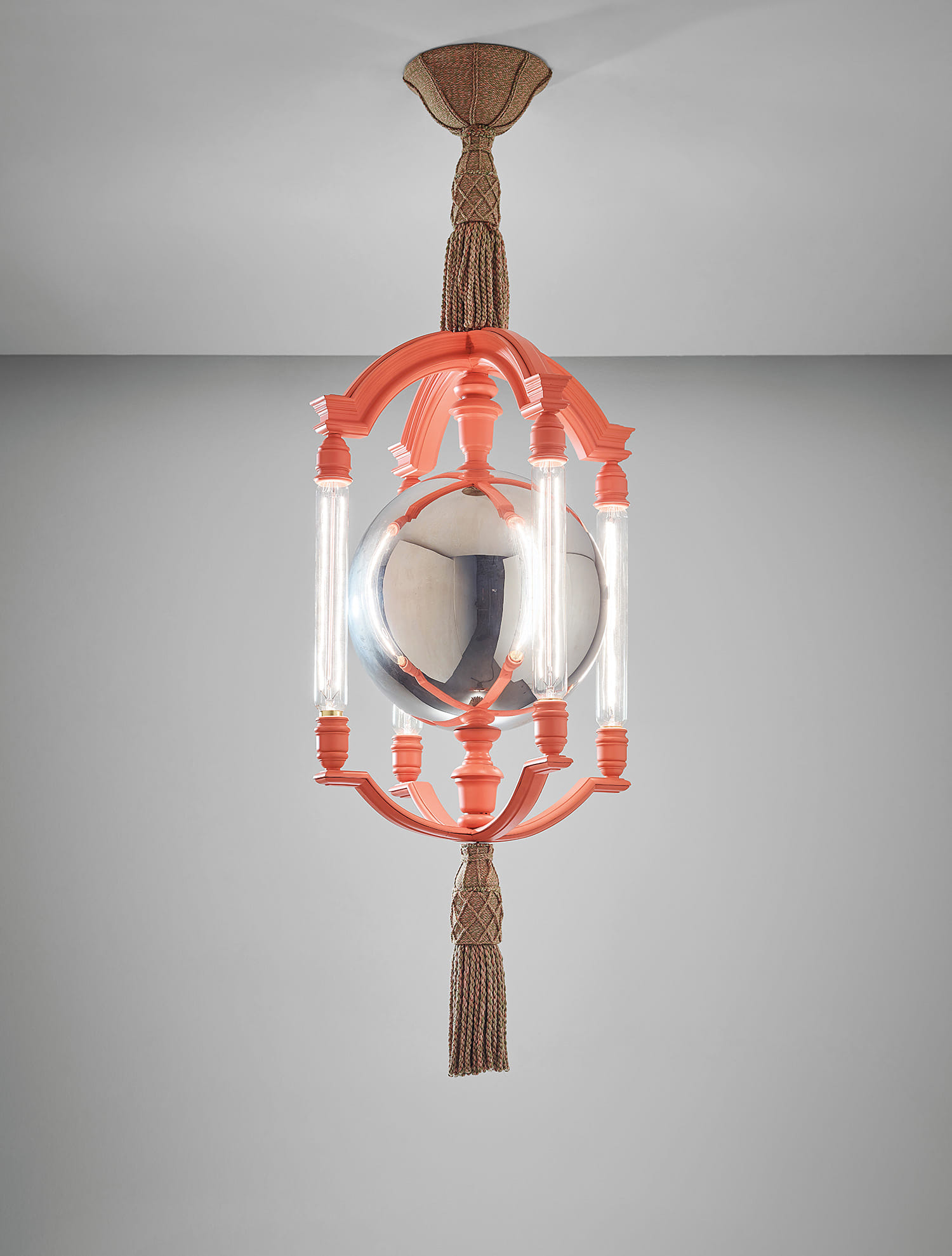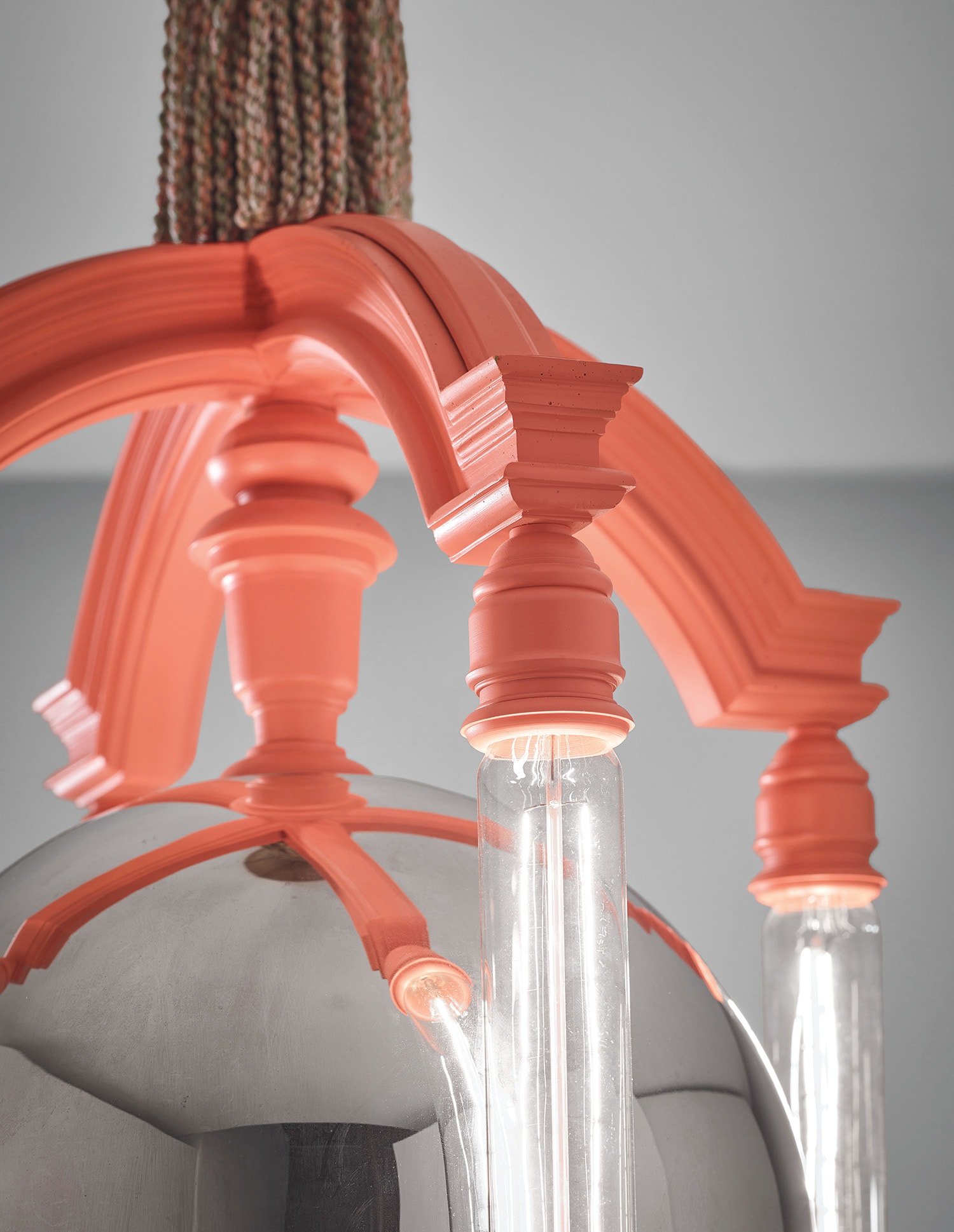



Property from the Lutyens Family Estate
92
Sir Edwin Lutyens
Important and rare 'Mercury Ball' chandelier, designed for the Viceroy’s House, New Delhi
circa 1930
Painted brass, nickel-plated brass, passementerie.
127 cm (50 in.) drop
Full-Cataloguing
Sir Edwin Lutyens - The Viceroy's House Chandelier
The ‘Mercury Ball’ chandelier is another example of a design made for the Viceroy’s House. Lutyens family tradition has it that the chandelier was designed for the Library but it does not appear in any photographs of the room, which does not even have a fitment for a hanging lamp, so it must have been for another room in that great palace. Like the clock, the design probably dates from the late 1920s or even early 1930s. Lutyens was designing chandeliers for his houses in the early 1900s, loosely based on late seventeenth and early eighteenth-century models. One such example that also incorporates a mercury glass ball is in the collections of the Royal Institute of British Architects and formerly belonged to Albert Thomas, who ran the Lutyens office in London. But Lutyens was very quick to grasp the decorative possibilities of light bulbs, which freed him from having to adapt historical models. He was one of the first architects to use flat glass discs to diffuse the light from bulbs hanging above them. The present example is an early use of what were called ‘shaver’ bulbs, introduced in the late 1920s. A similar use of such bulbs within a frame can be seen in the chapel of Campion Hall, Oxford, completed by Lutyens in 1936.
Charles Hind
Chief Curator and H.J. Heinz Curator of Drawings,
Royal Institute of British Architects
The ‘Mercury Ball’ chandelier is another example of a design made for the Viceroy’s House. Lutyens family tradition has it that the chandelier was designed for the Library but it does not appear in any photographs of the room, which does not even have a fitment for a hanging lamp, so it must have been for another room in that great palace. Like the clock, the design probably dates from the late 1920s or even early 1930s. Lutyens was designing chandeliers for his houses in the early 1900s, loosely based on late seventeenth and early eighteenth-century models. One such example that also incorporates a mercury glass ball is in the collections of the Royal Institute of British Architects and formerly belonged to Albert Thomas, who ran the Lutyens office in London. But Lutyens was very quick to grasp the decorative possibilities of light bulbs, which freed him from having to adapt historical models. He was one of the first architects to use flat glass discs to diffuse the light from bulbs hanging above them. The present example is an early use of what were called ‘shaver’ bulbs, introduced in the late 1920s. A similar use of such bulbs within a frame can be seen in the chapel of Campion Hall, Oxford, completed by Lutyens in 1936.
Charles Hind
Chief Curator and H.J. Heinz Curator of Drawings,
Royal Institute of British Architects